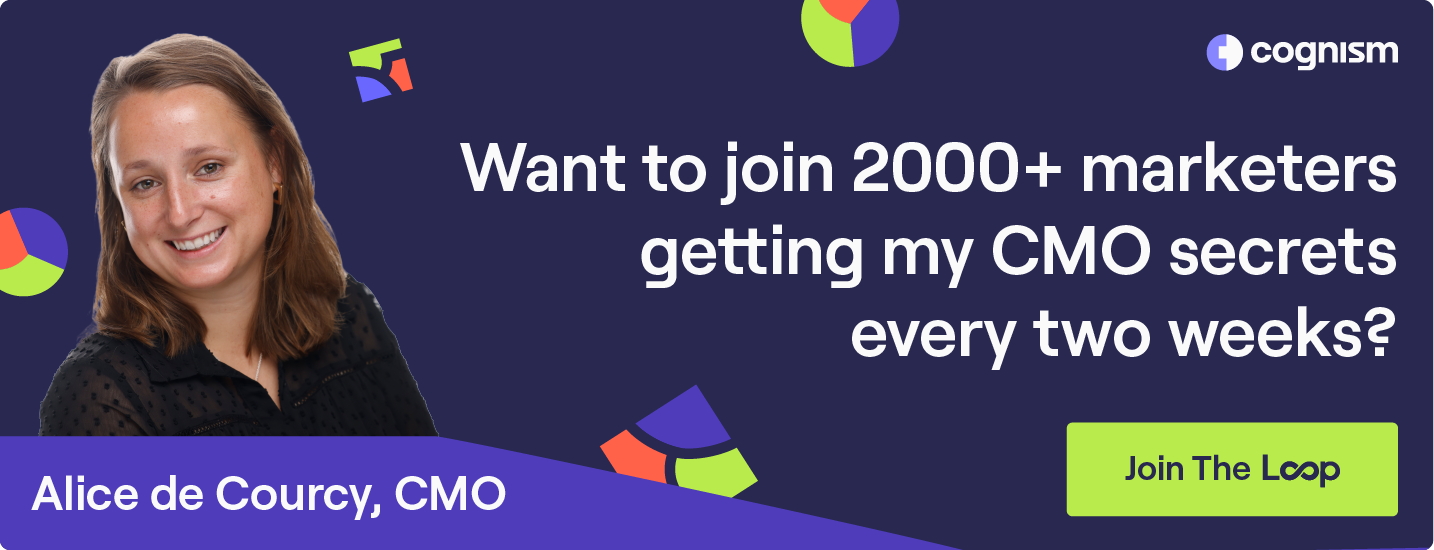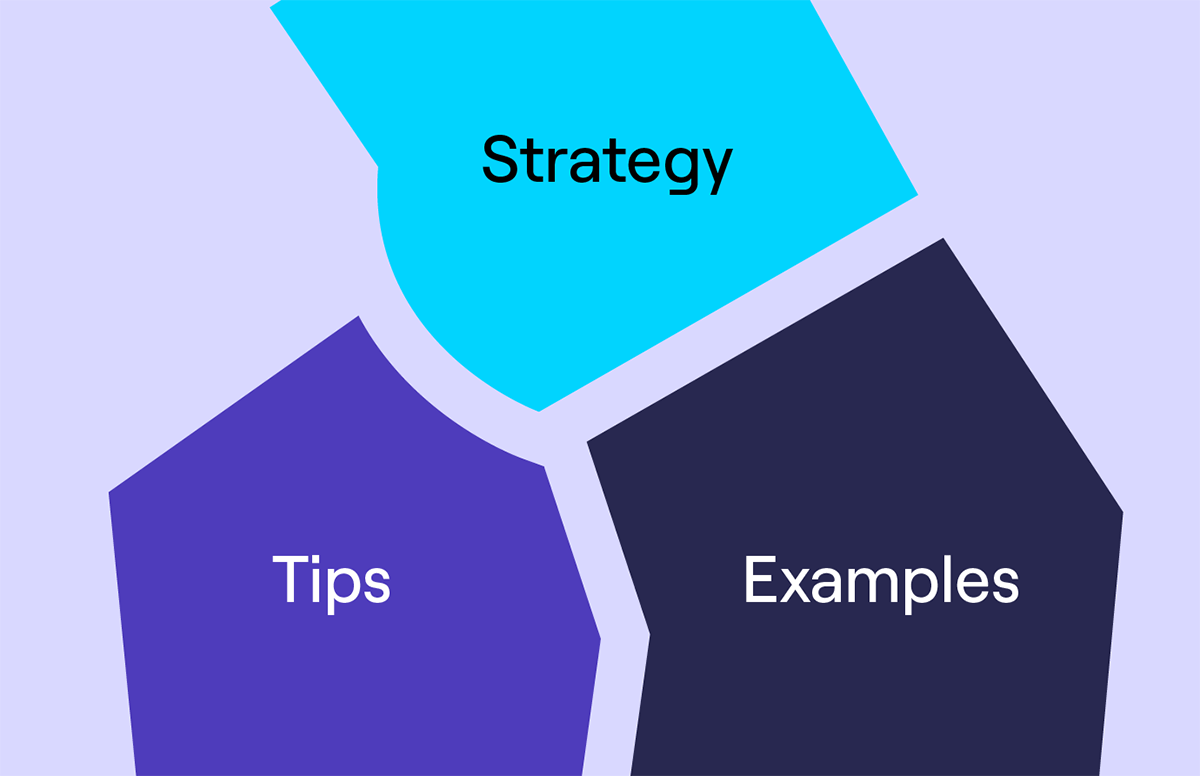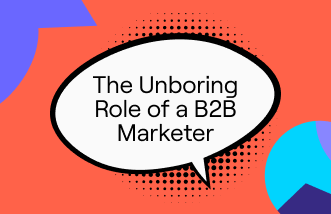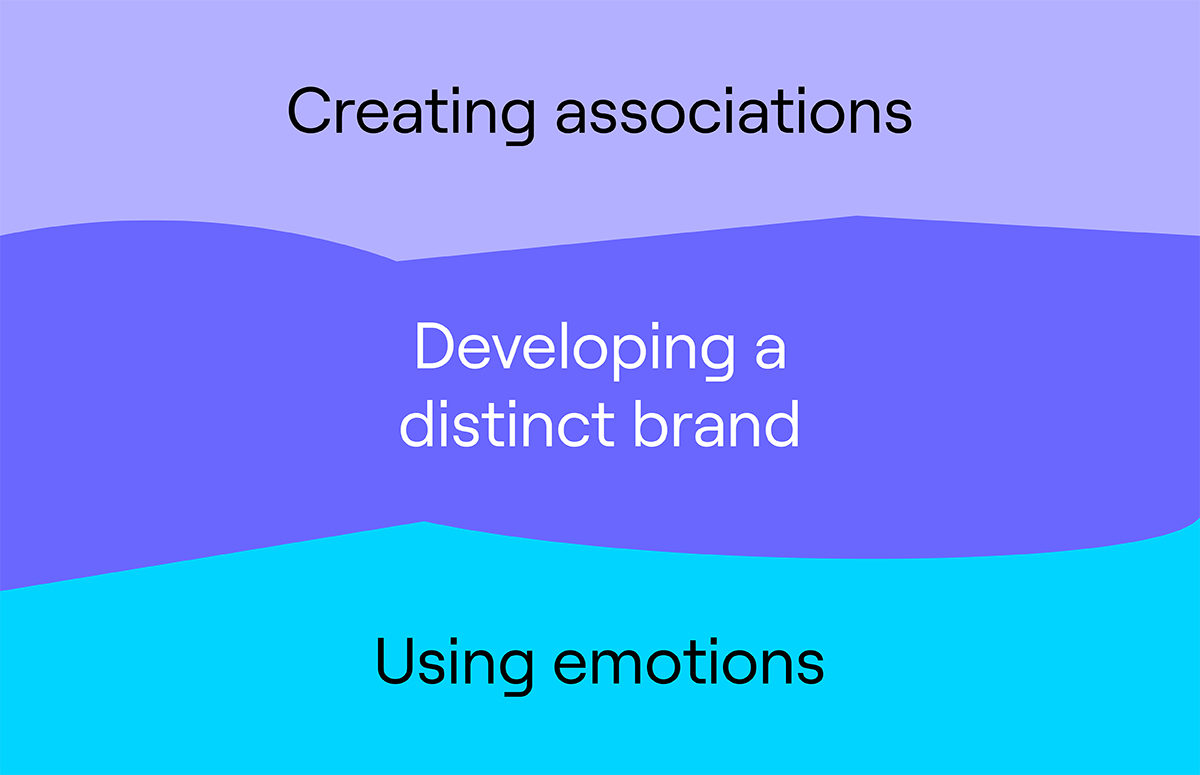Why Building a Personal Brand Benefits Demand Generation
If you’re a keen scroller on LinkedIn, you might notice a few names pop up again and again.
They might just be people with a lot to say… Or, it could be because they understand the power of personal branding.
After all, LinkedIn is just another channel for reaching your potential target audience.
And when it’s an individual posting, it feels much more authentic than a company hiding behind a logo.
But those individuals can still clearly represent a company or brand while building their own personal following.
Take Alice for example, our very own CMO at Cognism. She posts completely transparent insights into her decision-making at Cognism, explaining how and why we operate the way we do.
These posts provide value to readers, with actionable takeaways and advice to other B2B marketers.
Those people decide to follow Alice for more insights. All the while, Alice raises brand awareness for Cognism.
The theory is that if and when that audience is in the market for a product like Cognism, they know exactly where to go. Cognism is already front of mind.
They trust Alice based on the expertise she’s been drip-feeding on LinkedIn; therefore they’re more likely to trust Cognism as a company. Or at least, they know Cognism’s name.
This makes sales conversations much easier - inbound or outbound.
And it doesn’t have to stop with a company CMO. At Cognism, our team members regularly post insights to LinkedIn, because:
- That’s where our audience hangs out.
- We want to show the value you get from Cognism upfront.
- We enjoy learning from what others post on LinkedIn and hope we can help cycle the knowledge back.
- It doesn’t hurt that it can positively impact brand awareness, affinity and demand generation.
So if you’d like to know how to build your own personal brand on LinkedIn - just keep reading.
What’s demand generation?
Before you can understand how personal branding impacts demand generation, it’s helpful to grasp what demand generation is and what you can do to drive it.
Demand generation is as it sounds; it aims to generate demand from buyers for a company’s product or service.
The buyers can be previous customers, customers in the market looking for a solution you solve, or future customers who might not know you exist yet.
Demand generation activities help create brand awareness or interest in a company or its products and services.
For example, content marketing, account-based marketing or paid advertising.
If you want to know how to switch from a lead generation model to a demand generation model, click the video below. ⬇️
Personal branding strategy
Liam Bartholomew, Global Head of Demand Generation at Cognism says:
“Building a personal brand just gives you another organic channel to meet your audience where they are. It’s basically becoming a B2B influencer.”
“Aside from Cognism’s own LinkedIn channel, we also have a bunch of other channels through Cognism’s team.”
“Rather than Cognism just having its 30,000 followers, we now have a combined audience of, say, 50,000 without including external subject matter experts.”
Personal branding is a conscious part of Cognism’s demand generation strategy.
For insight, we have two main audience personas. The marketing persona and the sales persona.
Therefore, we’ve been working to build personal brands for team members and external contributors to cover both of these bases.
In other words, we want to build the personal brands of people who can represent Cognism as experts in subjects related to these core personas.
For example, we have three internal team members who are our marketing subject matter experts:
- Alice de Courcy - CMO
- Liam Bartholomew - Global Head of Demand Generation
- Fran Langham - Head of Demand Generation
They each post regularly to their LinkedIn profiles, talking about the work they’re doing at Cognism.
The sales persona was a little trickier - because as a marketing team, we have the marketing expertise readily available to deploy as part of our strategy. But the marketing team has less expertise in sales.
This meant we had to find the expertise outside our own team; we found them in our Sales Director, David Bentham, and two external subject matter experts.
We have a paid relationship with our external sales persona contributors. We work with them on producing content and also where to share it.
@cognism We love to see it 🤌😍#sales #saleshumor ♬ original sound - Cognism
Liam adds:
“Another important person to build a personal brand around is your company CEO.”
“Whether it’s marketing helping the CEO produce content, or they consistently post content themselves, they’re an influential representation of your company.”
Ultimately it comes down to your strategy. For example, if you’re selling marketing technologies, then you should have all your marketing leaders posting regularly on social platforms.
Liam says:
“Anyone who’s a relatable authority figure within a subject area who would be beneficial for your demand generation strategy - if you can get them posting, then that’s a win.”
For more insights on B2B marketing, visit Digital Silk here.
Using external subject matter experts
Choosing who your external subject matter experts will be - if you choose to go that route - is something worth thinking about.
It wouldn’t make sense to work with someone well-known as an electronics expert if you’re hoping to reach marketers. Wrong subject, so wrong audience.
You want to associate your brand with someone who’s an expert in a subject that’s of relevance to your audience. Having them post on your behalf can have several benefits:
- Increased brand awareness with their extended audience (likely your target audience if you choose the right subject matter expert!).
- Your brand is associated with their expertise.
- Those who trust the subject matter expert’s advice are more likely to trust the brand they represent.
Liam says:
“We work with Morgan Ingram, for example. He has over 100k followers on LinkedIn.”
“If he appears on one of our webinars, even if he didn’t post directly about Cognism, his audience would see the resulting webinar content. Morgan is then associated with Cognism and we can leverage his audience.”
Benefits of using personal branding for demand generation
One of the great perks of using a personal profile for demand generation is that the LinkedIn algorithm favours these posts.
For example, if you publish the exact same post from a personal account versus a company account, the post from the personal account will get better reach.
This is because LinkedIn needs individual contributors to continue using the platform in order to keep functioning.
It doesn’t want the feed to be full of companies talking about themselves and their products - because who would continue to visit LinkedIn if that were the case? This is the reason it prioritises posts from individuals.
Posting from personal accounts also helps to humanise your brand.
As mentioned earlier, people tend to find posts from individuals much more compelling than they do posts from a company. There’s just an innate trust issue there.
‘You’re a company, you must be trying to advertise or sell to me.’
Whereas when you see someone posting online, you start to get to know them. You can empathise, follow their story, and learn from their expertise.
Another benefit is networking.
When you post lots on LinkedIn - especially if what you’re posting is resonating - people tend to interact and want to connect with you.
Liam says:
“I’ve made so many connections through my LinkedIn presence which has then been beneficial for the business.”
“If you’re willing to take part in a community and add value, it often comes back to you. The more you put in, the more you get out.”
Liam also raises a benefit you might not have thought of…
“It’s great for attracting talent. If you’re talking about the way of work somewhere, then it’s not surprising that others see that and want to work at the same place.”
“We’ve been perceived as a forward-thinking marketing org, especially for our demand generation plays.”
“And we’ve had some brilliant applications from other DG marketers who want to work with us because they’ve seen our posts.”
“I know Dave has had the same happen in his sales department - budding sales reps want to work for him because they see him posting on LinkedIn.”
How to build a personal brand
The most important part of this process is simply consistent posting.
You can’t get invested in someone’s journey online if they don’t share it - so just start.
Liam says:
“When I first started posting, I just set myself a goal of posting once a week. Then I started to ramp it up to two or three times a week.”
“I have a doc where I note down ideas as I have them and then build them out into value-led posts.”
“I found it got easier with time as people would start interacting with my posts and asking me questions. That just became fuel for the next post.”
Another way to allow your audience to get to know you better is through video.
Alice, Liam and Fran often film short video clips of themselves and share them on their social platforms.
In other cases, they repurpose snippets from webinars or other content they’ve produced.
We’ve focused a lot on LinkedIn during this blog because that’s where a lot of B2B professionals start their personal branding.
However, other doors will open once you’ve started to build a name for yourself and your expertise.
Liam says:
“I’ve been invited onto podcasts as a guest; that’s great for getting your name out to new audiences.”
“It was also handy as I’d then use the content I shared in the podcast as inspiration for more LinkedIn posts.”
You can also set your LinkedIn profile up in ‘creator mode’. This means that rather than people connecting with you, they get the option to follow you.
This setting helps you grow your reach and influence on LinkedIn by allowing you to display the topics you talk about in your profile bio. The idea is that when someone searches LinkedIn for a specific topic, they’ll discover your content and follow you.
Liam suggests other ways to optimise your profile:
“Instead of thinking of your LinkedIn profile like a CV, consider how a follower might view it. What would make them more interested to follow and engage with you?”
“Update your bio with this in mind. Go into a bit more detail about your job history and what you did. Talk about what you’ve achieved.”
“You’re trying to establish yourself as someone worth listening to - someone trustworthy with something credible to say.”
If you’re not sure how to get started on this, take a look at a few of your favourite LinkedIn influencers. See how they’ve organised their profile for inspiration.
One final thing Liam was keen to mention about building your personal brand is to not shy away from being funny or showing some personality.
After all, you’re trying to communicate with other people - B2B language doesn’t always need to be formal and boring. Tell a story - don’t just share content for the sake of it.
You can be lighthearted, honest, and open, as well as use humour to engage with people.
Problems when using personal branding for a demand gen strategy
This approach does come with some potential hiccups. Similarly to celebrity endorsements and other influencer campaigns in the B2C world, using personal branding for a demand gen strategy can backfire.
Depending on who you’re using as a channel, or who as an individual you’re representing, you may need to be conscious of the content being shared.
You or your SME represent the brand, for better or worse.
Liam says:
“When I post, I always think about the brand I’m representing. It’s the same with anything in a professional setting. You have to take into account who’s watching.”
“I think it’s important to have some guardrails in place, such as brand guidelines or company values. Especially when you have external contributors posting on the company’s behalf.”
“It can be an interesting balance because you want to show enough personality to keep people coming back, but also keep it in line with the brand image.”
The future of personal branding
What will personal branding look like in future?
We think it’s safe to say the internet isn’t going away. However, it might become more difficult to be noticed as a B2B influencer as more and more people catch on.
And it’s not just marketers who’ll be using this approach either.
For example, Steven Schmidt, CRO at SellX, says:
“You’re seeing a lot of CROs start to flex the demand gen engine - building their own personal brand.”
“There’s a lot of value in what a CRO can teach, and that can be used as a magnet for demand generation.”
Liam also predicts more paid brand ambassadors and subject matter experts will emerge over the coming months and years.
If getting noticed in an increasingly saturated market becomes harder, those who already have an audience will become more valuable.
Interested in more demand generation insights from Cognism? Click the link below to sign up for our bi-weekly newsletter!



